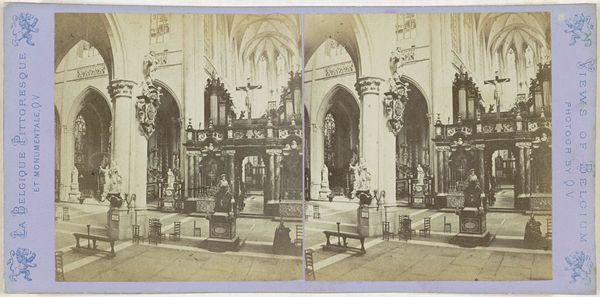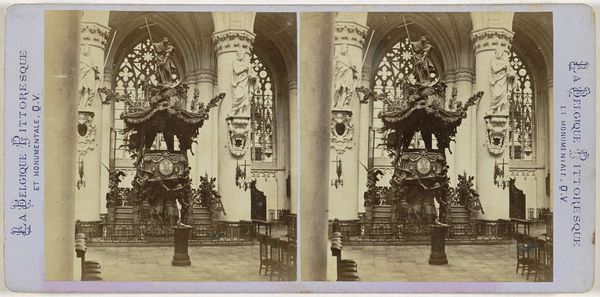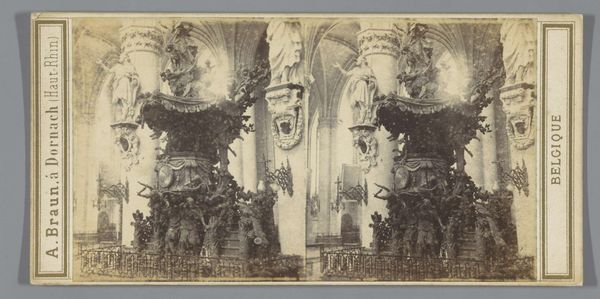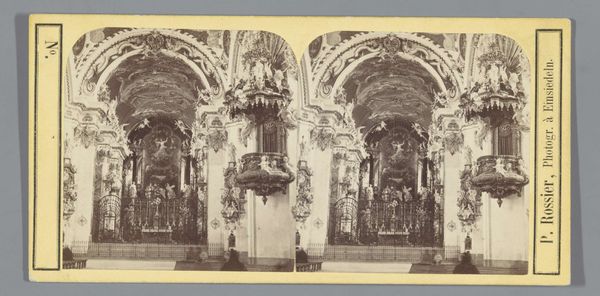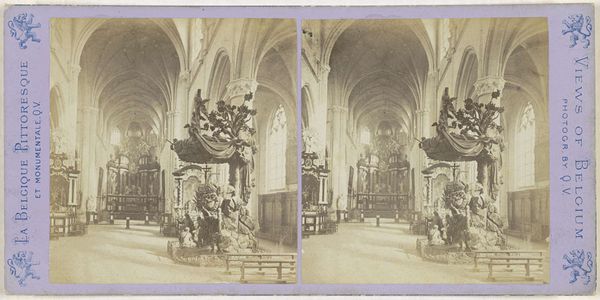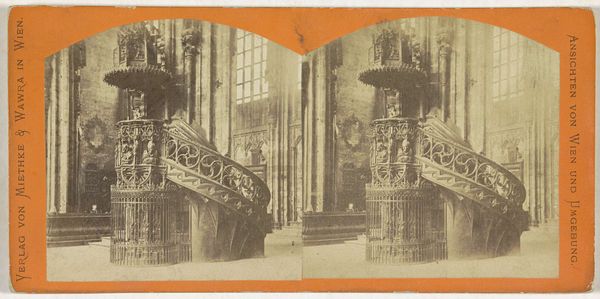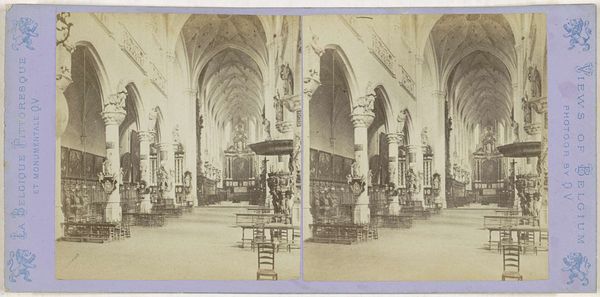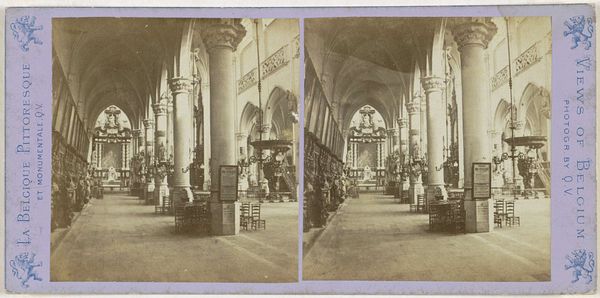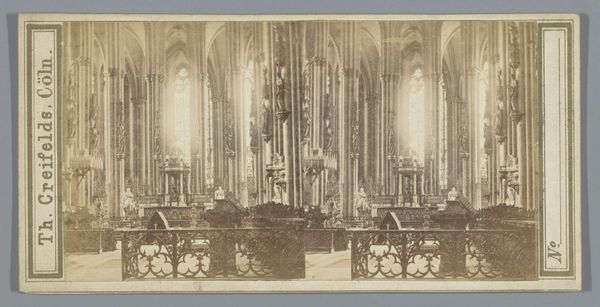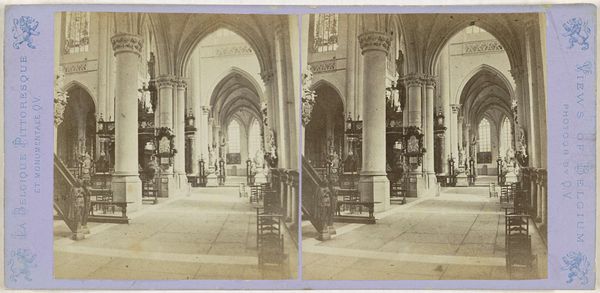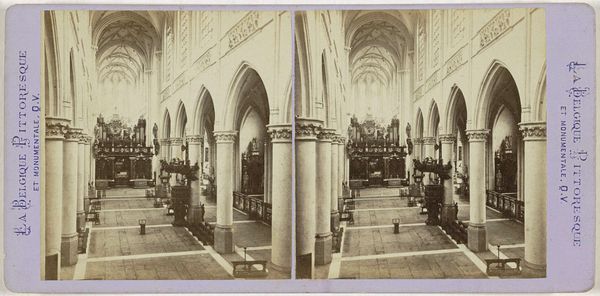
#
toned paper
#
ink painting
#
etching
#
handmade artwork painting
#
linocut print
#
coloured pencil
#
watercolour bleed
#
watercolour illustration
#
pencil art
#
watercolor
Dimensions: height 86 mm, width 175 mm
Copyright: Rijks Museum: Open Domain
Editor: This is "Interior of the Sint-Jacobskerk in Antwerp" by Jules Hippolyte Quéval, created between 1866 and 1870. It’s currently held at the Rijksmuseum. It's a really impressive image, evoking a sense of grandeur but also stillness, almost emptiness, despite the detailed architecture. What strikes you about this piece? Curator: Immediately, the symmetry and the formal composition command attention. Note how Quéval frames the central architectural elements, directing the eye towards a focal point deep within the structure. The strategic use of light and shadow accentuates the textures of the architectural details. How would you describe the overall tonal range and its contribution to the work? Editor: The limited range of tones - lots of light greys and creams – create a delicate feel, while allowing for emphasis on the architectural details that become more dominant as shapes. The dark accents feel especially significant in this composition because they make some ornate pieces stand out, giving it depth, especially within the shadows of the interior. Are these tonal relationships intended to represent depth or something more? Curator: I concur with your astute assessment regarding tonal relations, it enhances depth. Look at the orthogonals created by the architectural lines – they meet at a vanishing point, reinforcing the illusion of spatial recession, and subsequently creating a heightened, even staged effect. The composition deliberately uses structural elements, like columns and arches, as visual pathways. Are you drawn to a particular part of the construction, such as one detail of woodwork, in the piece that becomes most interesting through tonal change? Editor: It's the details above the archway, on what seems to be the pipe organ. It creates a frame in the middle of the frame. This formal repetition suggests... hierarchy, maybe? I do enjoy these echoing moments. I see this photo slightly differently now – not just as a depiction but also an essay on architectural form itself! Curator: Indeed, Quéval transforms a religious space into a study of perspective, form, and tonal harmony, ultimately inviting contemplation on both the seen and unseen structural elements.
Comments
No comments
Be the first to comment and join the conversation on the ultimate creative platform.
